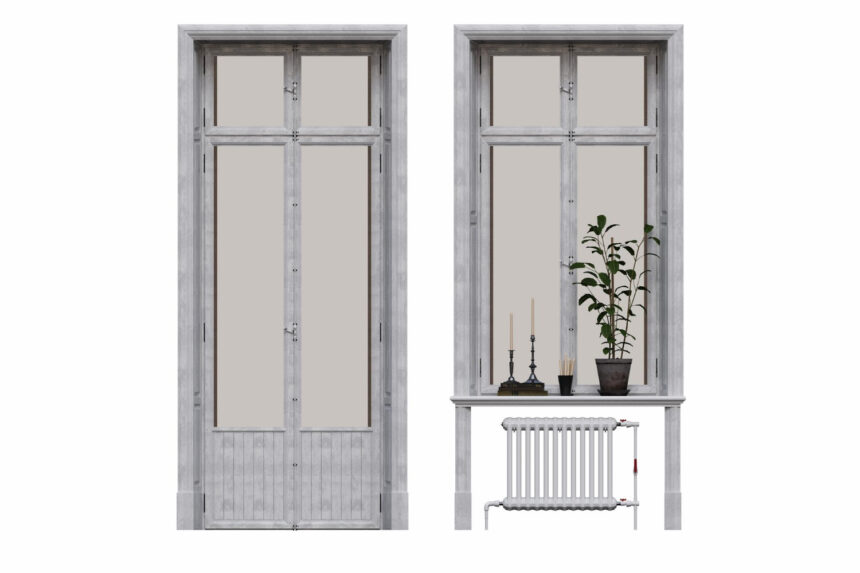uPVC doors have gained popularity for their strength, durability, and energy efficiency. These doors are made of unplasticized polyvinyl chloride, which provides great insulation and security for any home. Choosing uPVC doors can enhance the look of a house while also lowering energy bills due to their excellent thermal performance.
Many homeowners appreciate uPVC door for their low maintenance needs. Unlike wooden doors, they do not require regular painting or staining. Their resistance to weather elements makes them a smart choice in various climates. With a variety of styles and colors available, they can fit seamlessly into any home design.
Investing in uPVC doors means looking for a long-term solution that combines functionality and aesthetics. With their customizable options, these doors allow individuals to create a unique entrance that reflects personal style while providing top-level security. The benefits are clear, making uPVC doors a leading choice for modern homes.
Overview of UPVC Doors
UPVC doors are popular choices for homeowners due to their durability and variety of styles. They are made from unplasticized polyvinyl chloride, a material known for its strength and low maintenance. This section will cover the materials and composition of UPVC doors, the different types available, and the benefits of choosing these doors for homes.
Materials and Composition
UPVC stands for unplasticized polyvinyl chloride. This material is denser and stronger than regular PVC. It does not contain additives that make PVC more flexible, giving UPVC its durability.
UPVC doors comprise multiple layers that enhance their structural integrity. The outer layer provides protection from weather elements. The inner core often features insulation to improve energy efficiency.
Additionally, UPVC can be colored and finished in various ways to fit design needs. Homeowners can choose from wood-like finishes to bold colors, allowing for customization.
Types of UPVC Doors
There are several types of UPVC doors to choose from. Common styles include:
- Panel Doors: These have raised or flat panels. They offer a classic look.
- Glazed Doors: These allow natural light into the home while maintaining strength and security.
- French Doors: These are ideal for entrances leading to patios and gardens, providing wide openings.
Each type can come with various designs and security features, ensuring that homeowners find an option that meets their needs.
Benefits of Using UPVC
Choosing UPVC doors comes with numerous advantages. Here are some key benefits:
- Durability: UPVC doors resist warping, fading, and corrosion. They maintain their shape and color over time.
- Low Maintenance: Unlike wood, UPVC does not require frequent painting or staining. A simple clean with soap and water suffices.
- Energy Efficiency: These doors often come with good insulation properties, reducing heating costs.
- Affordability: Compared to other materials like wood or aluminum, UPVC doors are usually more cost-effective.
These features make UPVC doors an appealing and practical choice for many homeowners.
Installation Procedures
Successful installation of a uPVC door requires careful measurement and the right tools. Proper preparation ensures a secure and functional fit.
Measuring and Fitting
Accurate measurements are crucial before installing a uPVC door. First, measure the width and height of the door frame. It is essential to take measurements at multiple points to ensure consistency. The door opening should be slightly larger than the door itself to allow for adjustments during installation.
Next, check for level and plumb using a spirit level. Discrepancies in these measurements can lead to problems with the door’s operation. Make any necessary adjustments to the frame if it is not square. After measurements check out, carefully position the door in the frame. Secure it with screws, making sure it swings freely and does not catch on the frame.
Tools and Equipment Required
To install a uPVC door, specific tools and equipment are necessary. Below is a list of essential items:
- Drill: For creating holes for screws.
- Screwdriver: To tighten screws for secure fitting.
- Measuring tape: For gathering accurate measurements.
- Spirit level: To ensure the door is plumb and level.
- Sealant: To create a weatherproof seal.
Other helpful tools include shims for adjustments and a hammer. It is important to prepare all tools in advance to streamline the installation process. Having everything organized saves time and minimizes errors during installation.
Maintenance and Care
Proper maintenance and care ensure that UPVC doors remain functional and aesthetically pleasing. Regular attention can prevent common issues and extend the lifespan of these doors.
Cleaning and Upkeep
Maintaining a UPVC door involves regular cleaning to keep it looking its best. Use a soft cloth or sponge with warm, soapy water for routine cleaning. Avoid harsh chemicals that can damage the surface.
For stubborn stains, a mixture of vinegar and water can be effective. After cleaning, rinse with clean water and dry the door thoroughly.
Additionally, periodic checks of seals and hinges help ensure they are in good condition. Lubricating moving parts with silicone spray can prevent sticking and wear.
Cleaning Checklist:
- Soft cloth or sponge
- Warm, soapy water
- Vinegar solution for stains
- Silicone spray for lubrication
Common Issues and Solutions
UPVC doors can experience a few common problems. One issue is difficulty in opening or closing the door. This could be due to misalignment or dirty hinges.
They should be realigned by adjusting the hinges or using lubrication to ease any friction.
Another problem is fogging or condensation in double-glazed units. If this occurs, the seal may be damaged and needs replacement.
Regular checks can help identify issues early, making repairs simpler and less costly.
Quick Solutions:
- Door sticking: Adjust hinges, clean with lubricant.
- Condensation: Replace faulty seals.
Design Customization
Customizing a UPVC door allows homeowners to create a look that suits their style and needs. Important aspects of customization include choosing colors, finishes, and hardware options. These decisions can significantly enhance the door’s appearance and functionality.
Color and Finishes
The color and finish of a UPVC door play vital roles in its visual appeal. Homeowners can select from a wide range of colors, including classic whites, rich browns, and vibrant hues. Choosing a color that complements the home’s exterior is crucial for overall aesthetics.
Finishes also offer a way to personalize the door. Options include smooth, textured, or woodgrain effects, which mimic the look of natural materials. There are even dual-color options, allowing the homeowner to have one color outside and another inside. These choices can impact not only beauty but also the longevity of the door against weathering.
Hardware and Accessories
Hardware is another critical component of door customization. Homeowners can choose from various handles, locks, and hinges. Options may range from contemporary to traditional styles, allowing further personalization that matches the home’s overall theme.
Accessories can enhance both security and appearance. Adding features like letterboxes, door chains, or decorative knockers can make a door unique. Many manufacturers offer matching hardware sets that coordinate well with various colors and finishes, promoting a cohesive look. Selecting the right hardware is essential for both usability and style.






